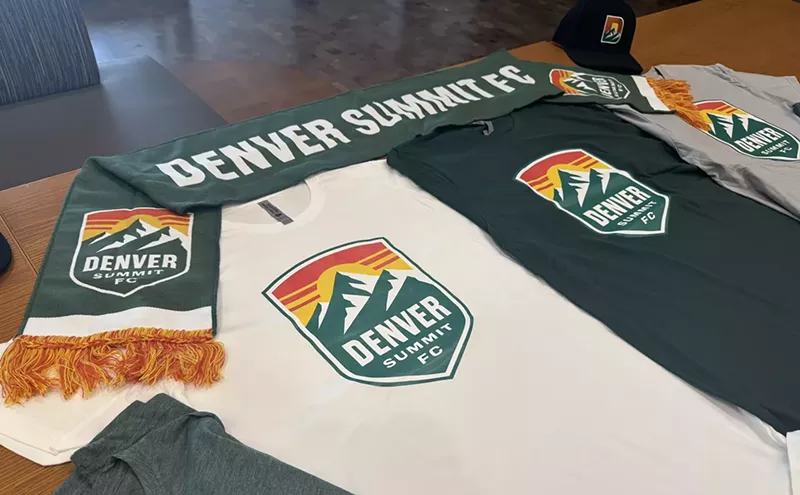Spencer and Braxton Jones have to get off this doomed spaceship. It's teetering on the brink of a black hole, and they're inching toward oblivion.
The only way out is via the ship's escape rockets, but there's a catch: The rockets' components are scattered all about the spaceship, in the form of little plastic building blocks.
The rockets must be made out of LEGOs — just like the spaceship itself, and the characters that twelve-year-old Spencer and nine-year-old Braxton are controlling. Poised in front of computer screens, the brothers are plugging away at LEGO Universe, a massively multiplayer online game being developed by Louisville-based NetDevil. They're using minifigs — the yellow-skinned, cherub-faced characters that are the signature LEGO denizens — to explore a virtual world akin to that of the wildly popular World of Warcraft, but with a family-friendly twist. In this sprawling realm of bricks and minifigs, hundreds of thousands of players will get to explore moon bases and castles and many other subjects covered by LEGO toys over the years, taking on massing forces of chaos and destruction — hence the black hole — armed with the game's powerful version of the Force: their "imagination." When characters are eliminated, they don't die; they just explode into pieces, and their spirits of imagination float into new minifigs. This is LEGO's universe, after all; anything smashed apart can always be put back together.
Before they started playing today, Spencer and Braxton got to design their in-game minifigs, selecting their facial expressions and outfits — everything from pirate caps to ninja garb. And right now, if the two don't act fast, their carefully built guys will be toast. Still, as they hurriedly pilot them around the spaceship, the brothers manage to shout out a constant stream of opinions about the game.
"All the rocket pieces are on the top level of the ship," one of them says. "That's really inconvenient."
His brother chimes in with a criticism of the rocket: "That's a really creepy nose cone, by the way."
Their play is being studied very seriously. In a darkened room next door, a crowd of NetDevil team members watch the boys through a one-way mirror. Cameras in the testing studio are trained on the brothers' hands and faces, capturing keyboard strokes and facial expressions and sending them to video screens. Other screens simulcast their game screens. A woman in the studio, armed with a clipboard, spouts probing questions when the brothers don't come up with feedback on their own. "Was it helpful having a reminder to look around the spaceship?" she asks. "Would you have been able to do this without a reminder?"
The NetDevil employees scrutinize every response and detail. They take note when one boy successfully knocks apart a laser turret and uses the loose bricks to build something else. They groan when the other finds a glitch in the game's geography and wanders off into some out-of-bounds corner. To retrieve him, one of the observers has to log into the game and, using a minifig, guide the boy back, sherpa-like, to the central action.
Recruited through their membership in an online LEGO fan club, the boys, who live in Erie, have been working with NetDevil for years, first giving feedback when the game was just a series of storyboards, then playing through levels as the digital nuts and bolts of LEGO Universe came together. There are many other kid testers in Colorado, and LEGO runs its own test in hot game markets like Europe. In all, the company has thousands of hours of gameplay footage — and not much time left to analyze it. NetDevil has ratcheted up the tests lately, scheduling one a day to make sure that the game is as polished as possible for its coming-out party: the 2010 Consumer Electronics Show, which runs from January 7 to January 10 in Las Vegas. NetDevil will unveil LEGO Universe's official game trailer at CES, the biggest technology trade show of the year, letting people try a hands-on demo and sign up for an online beta version. It's all part of the lead-up to an as-yet-undisclosed date sometime in the second half of 2010, when LEGO Universe will hit the shelves. That's when all of NetDevil's work will pay off — or go bust.
But first, there's that wonky in-game camera, which is making the brothers' game screens jerk about. "Why does the camera fly around like that?' asks one NetDevil employee.
"It's artistic," responds a colleague.
No, says the first employee. "It's painful."
Chalk one up for the forces of chaos and destruction.
NetDevil got its start in a Louisville basement in 1997 when Scott Brown, now the company president, and tech-whiz colleagues Ryan Seabury and Peter Grundy began developing Jumpgate. The space shooter was a relatively early example of a massively multiplayer online game, or MMOG, which allows thousands of players from around the globe to explore expansive virtual worlds at the same time, even interacting with one another.
Those humble beginnings are a far cry from today's NetDevil, where more than 130 game designers armed with top-of-the-line computer systems are building make-believe worlds. The corporate offices are hidden away in an unremarkable office building in Louisville's tech center. But the inner sanctum of the studio — access to which is only granted though a battery of corporate sign-offs and non-disclosure agreements — resembles a toy shop on steroids. LEGO creations clutter the cavernous space: cars and pirate ships and European-style row houses and cartoon characters, not to mention a proliferation of Millennium Falcons. Near the entrance is a picture of an anglerfish, the creature on NetDevil's logo, made entirely out of LEGOs, as well as a red, twelve-foot-tall, eight-stud brick that has to be moved by forklift. There's also a real-world library of ten million LEGO bricks; the only larger collections are at the LEGOLAND amusement parks and LEGO headquarters in Denmark.
Employees zoom around on scooters, the preferred mode of inter-office transportation. They zip past the indoor basketball half-court, the rec area overflowing with video games, the corners of the studio devoted to NetDevil's other titles — like Jumpgate Evolution, a remake of the company's first game, and a yet-to-be-announced title about which all visitors are sworn to secrecy.
But most of the space belongs to LEGO Universe. Artists sketch out concepts for scenes and scenery while other employees translate those drawings into 3-D digital models. Developers map out game mechanics and storylines on dry-erase boards; musicians mix soundtracks in an "audio cabana." Nearby, programmers hunch over multi-panel computer screens, stringing together code that will make it all work. The massive undertaking has led NetDevil, which was purchased by California game developer Gazillion Entertainment in 2008, to expand its workforce by about 50 percent a year, recruiting top talent from around the country. When the swelling ranks outgrew its old workplace, NetDevil simply knocked a two-story hole in the wall and spilled into an adjoining office.
Above all this action hangs a life-sized, battle-scarred car, perpetually crashing through one of the studio's walls. It's a tribute to Auto Assault, a post-apocalyptic car adventure that was the company's second foray into online worlds. As part of the game's release in 2006, NetDevil tried to give the car away in a contest — but the winner opted for a cash prize instead. That slight more or less summed up the public's opinion of the game, and Auto Assault, though critically well received, shut down in 2007.
NetDevil could have shut down, too, or moved away, like many of the game developers that have called Colorado home. (Idol Minds, one of the few developers left in the state, laid off half of its employees in October.) But instead it grew bigger — because in the meantime, it had scored the LEGO deal.
That deal was a dream come true for NetDevil co-founder Seabury, now creative director of LEGO Universe, since he still had a crate of LEGOs stashed away in his childhood home. "The first thing I thought of were all the positives," he says. "When you look at a property like LEGO, it's almost universally recognized. It's hard to think of a company with more positive recognition. The only complaint you hear is about parents stepping on bricks in the dark."
While NetDevil was far from the only company the toymaker talked with when it decided to create a new game — LEGO ultimately vetted 51 developers around the world — the relatively unknown Colorado team came out on top. "It's weird, because they were a smaller company, and this is clearly the biggest thing they've ever done," says Evan Narcisse, a New York City-based video-game journalist. "You would have thought somebody like [World of Warcraft developer] Blizzard would have landed this."
But NetDevil's technical ambitions — in one Auto Assault scene, the company tried to run 34,000 different digital objects using physics-engine software designed for 2,000 objects at most — as well as its good-natured attitude appealed to LEGO. "The fit was very important to us. We knew it was a very long-term project," says Mark Hanson, LEGO Universe project lead and director of business development for the LEGO Group. "All around, it was a very good company for us to go with."
And while Auto Assault didn't perform as expected, the very fact that NetDevil was able to bring to market a game of its magnitude was a mark in its favor. MMOGs are far more complex than typical video games; when you have thousands of people interacting with one another in a vast virtual world, real-life complexities arise that never had to be considered for games like Super Mario Bros. Developers have to think like city planners, considering just how many players an online game should accommodate so that it doesn't feel as empty as a bus station at midnight or as crowded as a New York City subway stop at rush hour. And then there's the all-important fun factor.
As Seabury puts it, "How do you code fun?" To answer that question, the game developers have worked in three-week sprints, then re-evaluated — and sometimes scrapped — everything they've done. For example, one early level centered on LEGO skunks. But in play tests, older kids complained the theme was too childish — and worse, testers in Europe didn't even know what the animals were. So developers dumped that concept and went back to the digital drawing board.
"I've never worked on anything this hard before," says Erik Urdang, LEGO Universe's technical director, who studied artificial intelligence at Columbia and Yale. While the game was originally scheduled to come out in 2009, the release date has been pushed back several times.
And NetDevil has to do more than just build a good online game: It also must meet the stringent requirements of its very powerful partner. LEGO didn't just ship ten million bricks and one twelve-foot behemoth to Louisville because it was feeling generous. NetDevil got the message loud and clear.
This is what makes us special, the Danish company was saying with every one of those bricks. Make sure you get it right.
Duane Hess received the mysterious phone call in 2006. "I have an opportunity for you," said the man on the other end. "Would you like to build with LEGOs as a full-time job?"
It was a ridiculous question for the Broomfield resident. Of course Hess, then an employee at a Corporate Express office-supply company, wanted to build with LEGOs as a full-time job. He'd loved LEGOs since his uncle had given him his first set when he was a toddler: "Fuel Pumper," set number 554. Growing up, he lived for birthdays and Christmas, when the tell-tale sound of bricks moving inside still-wrapped presents would signal that he'd received just what he wanted.
The child of a family that moved around a lot, Hess could rely on LEGO: the orderly way the sets' instructions would direct him to craft a model piece by piece, and then, when the creations were finished, the liberating freedom they offered when he could take them apart and build whatever he dreamed up. Unlike most adult fans of LEGO — or AFOLs, as they call themselves — Hess never went through what's known as the "dark period," the time when teenagers hide their plastic bricks in a closet, only to come back to them when they're a little older and less self-conscious. Hess kept building right on through, and was there for many of LEGO's big milestones:
The birth of minifigs and the first themed sets (space and castle) in the late 1970s. The launch of Technic advanced sets, with all their gears and axles, in 1984. The proliferation of subgenres in the 1990s, including Dragon Masters, Time Cruisers and Ice Planet 2002. And, in the 2000s, the rise of Hollywood tie-ins, from LEGO Ewoks to LEGO Hogwarts.
When he met his future wife, he warned her that wherever he went, his bricks went, too. Poking around AFOL online forums like LUGNET, he discovered he wasn't the only grownup purchasing armloads of LEGO sets from Toys 'R' Us not for his kids, but for himself. He helped found Colorado Wyoming Lego Users Group, or CoWLUG, and on sites like Flickr and Brickshelf, he posted his favorite creations — jet planes and combine harvesters and Godzilla monsters — along with detailed instructions on how to build them.
He never realized that he was creating an online resumé for very important people at LEGO — which is what led to that strange call.
Before revealing anything more about the opportunity, the LEGO rep told Hess that he had to be willing to move wherever the job required. After talking it over with his wife, Hess agreed — and then was asked to compete in a "build-off." LEGO sent him an image of a '50s sci-fi spaceship and told him he had a week to turn it into LEGO bricks.
It was a tough build, Hess remembers, with "compound curves galore." But he pulled it off and scored the gig as the first LEGO digital model designer at NetDevil's studio — which turned out to be just down the road.
"For me, it was dead-on perfect," Hess says. "Fate could not have smiled any better than this." As the company's LEGO librarian, he's now in charge of "managing the brick," keeping shelf after shelf of color-coded brick bins refilled and orderly so that employees can mine them for creative inspiration, as well as unpacking the crates that are constantly arriving from LEGO headquarters. His purview is staggering: There are simple two-stud bricks, eccentric pieces like dragon wings and rocket boosters, rare permutations that can fetch upwards of $4 a pop on gray-market online auctions (the joke is if LEGO Universe bombs, NetDevil can just sell off its LEGO loot), and many examples of Hess's favorite piece: a versatile brick with LEGO's signature nobs on five of its sides, a flamboyant example of what's known in LEGO parlance as "studs not on top," or SNOT.
Hess knows them all. He needs to, because he uses them to ensure that every LEGO asset in the game is buildable in the real world. Artists hand him concept drawings, and he re-creates them using either virtual LEGO building software on his computer or the real-world bricks at his disposal. In essence, he's a translator, taking the various ideas of the game developers and making sure they work within the sacred language of LEGO.
LEGO learned the hard way the risk of taking that language for granted. The company has been around since 1932, when a Danish carpenter named Ole Kirk Christiansen started producing toys and named the company after the Danish phrase leg godt, meaning "play well." By the early 21st century, however, LEGO was dabbling in non-brick products and suffering staggering losses. "In the early 2000s, we had some major, major problems in the company," says Hanson, LEGO's director of business development. "We tried doing many different types of businesses without aligning them with the brick. LEGO's success is all about the brick."
So the company returned to its roots. Today, all of its products, from Shrek toys to an upcoming line of board games, are based on the little building blocks that have been around for decades. And the move paid off. According to Vermont-based toy analyst Lutz Muller, LEGO now controls 75 to 80 percent of the construction-toy category, up from 40 percent six years ago. "They have been absolutely superb in their management," says Muller.
LEGO followed the same stategy as it expanded into the digital realm. While the company has produced a variety of video games, it struck gold when it partnered with a British game developer named Traveller's Tales to develop a series of titles that retell the Star Wars, Indiana Jones and Batman mythos through carefully re-created LEGO bricks. The quirky, family-friendly games have been huge hits, capturing everything that's unique about LEGO.
Everything, that is, except the ability to build your own creations — and that's where LEGO Universe comes in. "When it launches, the thought is at first that 90 percent of the game will be created by NetDevil and 10 percent will be user-generated content," says Geoff Jones, LEGO Universe's lead game designer. "We want those numbers to flip down the line. Ninety percent of the stuff will be user-generated." In effect, it will be a user-friendly take on Second Life, the online virtual world where everything is created by its users.
LEGO thinks the game has the potential to change the way kids play with the building blocks. "When kids build with LEGOs on the floor of their bedroom, they just don't get up and take their collections to their friend's house," Hanson says. "This adds much more social interaction to the game play." Eventually, players will be able to purchase customized building sets from LEGO based on their in-game models, similar to a program LEGO currently offers on its website called Design byME.
But allowing people to construct their own creations in an MMOG creates a host of new challenges. For one thing, Seabury says, LEGO doesn't want older players logging in to what's supposed to be a kids' game and building whatever comes to their twisted minds. And even if players aren't making LEGO versions of dirty jokes, they might want to build Terminators or Gandalfs or other things that could violate copyrights. When players started re-creating their favorite comic-book characters in the online game City of Heroes, Marvel slapped the developer with a lawsuit. The NetDevil team members say their solution to these puzzles is so clever that they're not at liberty to fully discuss it. But it involves giving players the ability to build whatever they want on private, virtual property that each player owns in the game, then subjecting these creations to the oversight of moderators and safety screens if players want to show them off to others.
Equivalency posed another problem: In a game featuring creations from every time period imaginable, how do you figure out whether a pirate ship or a jet plane is more powerful? And then there was the conundrum of digitally rendering those bricks. To re-create the particular sheen of acrylonitrile butadiene styrene, the type of plastic used in all LEGO pieces, NetDevil art director Phillip Atencio and his team had to develop a process called ambient inclusion that mimics the way light bounces off the different colored bricks. And just making a sixteen-stud virtual LEGO brick requires twice as many three-dimensional surfaces, or polygons, as a World of Warcraft character, thanks to all its knobs, divots and underside tubes — not to mention the tiny LEGO logos emblazoned on each stud.
To make sure the game can handle all these complicated structures and still work on kids' hand-me-down computers, the NetDevil team turns to Hess and a fellow modeler. Now when Hess builds something that's going in the game, he has to make sure the final product doesn't exhibit too many complicated studs or tubes but is still recognizably LEGO. To do so, he's developed clever new building techniques that allow his bricks to sprout in seemingly every direction at once.
"He was a pretty good builder to start with," says Stuart Guarnieri, one of Hess's CoWLUG colleagues. "Now what he can do is astonishing."
Its three days before Christmas, and the LEGO outlet store at Colorado Mills is just steps away from consumer chaos.
Parents vacillate between which sets to purchase while kids plead for the hot, pricey versions. Throughout the store, fancy displays offer up pre-built models to tempt shoppers: robots, futuristic drilling machines, Indiana Jones battle sets. In one corner, a display features one of the most intricate models of all — but this one's not for sale. It's a busy city intersection, accurate to minute details. Inside one building is a packed pizzeria that's amazingly realistic, save for the fact that R2-D2 robots are serving the pizzas. Across the miniature street, an auto shop is in full swing; under an elevated car, a flickering electronic light mimics the sparks of a welding tool.
The display showcases the handiwork of CoWLUG members — another example of LEGO's recent interest in catering to adult devotees. The company has launched an ambassador program to collect feedback on new sets from AFOLs and has also developed grown-up product lines such as LEGO Frank Lloyd Wright models. "Bear in mind, the basic concept of LEGO is a building toy," says Jim Foulds, LEGO's community development manager. "But what is happening is that the adult fan community has made the company think about it from a broader perspective, that LEGO is not just a toy. LEGO is also a creative medium being used by professional architects and hobbyists."
LEGO hasn't just realized the purchasing power of its long-enduring fans (and, by extension, the fans' children); the company has also recognized the hazards of getting on their bad side. That was a lesson learned during the gray-brick debacle of 2003, when LEGO tweaked its manufacturing process, resulting in gray bricks that had a slight bluish hue. "Bley," is how obsessive collectors described the unfortunate change. "It created quite an uproar in the adult community, says Eric Kingsley, a Massachusetts-based AFOL who helped found the New England Lego Users Group. "These people are very interested in keeping a consistent color palette." Although LEGO kept the new color, the company made sure that future changes were run by their fans first.
While LEGO Universe is geared toward players ages eight to twelve, it's a fair bet that many AFOLs will log in, too. And the game could be a fan fiasco if NetDevil doesn't get the final product just right. So the game's developers have taken a novel, even radical approach: They've handed the keys of the digital kingdom over to some of the most passionate AFOLs and told them to build part of the game themselves.
That's the idea behind LEGO Universe Partners — known, thanks to the LEGO community's penchant for ungainly acronyms, as LUPs. "LEGO knew from the get-go it wanted a community portion to the game," says Foulds. "The community itself offers tremendous skill in building." Over the past few years, the game developers have recruited dozens of AFOL volunteers, including Kingsley and CoWLUG's Guarnieri, and provided them with the software necessary to build LEGO worlds on their home computers that could become part of LEGO Universe.
Exactly what they're coming up with is still top-secret, but according to Brian Johnson, LEGO Universe's community producer, it could range from levels that resemble giant versions of the old Milton Bradley board game "Operation" to adventures with J.R.R. Tolkien-like backstories. And once the game launches, even more LUPs may be brought on board to keep the strange, fantastical fringes of the virtual world flourishing. "I like to think of it like Tatooine in Star Wars," says Johnson. "It's what's going on in the outer rim of the universe."
That means that more hard-core fans will be spending more hours in front of their computer screens, building virtual LEGO worlds. It's a labor of love, says Guarnieri, who explains that it's all about "loving the brick." Even if it's a slightly bluer shade of gray.
Their LEGO escape rockets assembled, Spencer and Braxton Jones make it off their ill-fated spaceship just before it slips into the black hole.
They zoom to safety: a hilly, forested planet inhabited by friendly minfig townsfolk. But the forces of chaos and destruction have reached here, too. Hostile robots are running amok, and the locals have been forced, in true LEGO style, to repurpose their belongings in order to survive. One village seems to have fashioned a security perimeter out of a LEGO Winnebago.
Braxton takes his time exploring this colorful world, looking for new objects to accessorize his outfit and his rocket ship. Spencer is more detail-oriented, having been schooled in mission-centered games like those in the Call of Duty series. For him, it's all about getting through the level as quickly and efficiently as possible.
Next door, NetDevil employees take note of the different playing styles. They know the game has to accommodate both kinds of players, and many more — everyone from hard-core World of Warcraft vets to bumbling MMOG newbies, 'tween LEGO builders on the verge of the toy company's dreaded "dark period" and obsessed forty-year-old AFOLs.
Even if they pull that off and the game does well when it's finally launched later this year, NetDevil employees will still have their work cut for them. Unlike typical video games, MMOGs like LEGO Universe are far from finished when they hit the market. While NetDevil hasn't announced specific pricing, LEGO Universe will be a subscription-based game, with people paying a monthly fee to play it. "We have more in common with a business like HBO than Madden NFL," says company president Brown, who admits he was more into Star Wars than LEGO growing up. "They are going to continue to pay us to play the game, so we have to provide new content and features all the time." He points out that World of Warcraft, which boasts 11.5 million monthly subscribers and rakes in more than a billion dollars a year in revenue, now has hundreds of employees just to handle customer service. That means NetDevil could soon be knocking additional holes in its studio walls to accommodate even more workers.
If the game's successful, that is. It's also possible that the twelve-foot-tall LEGO brick may end up alongside the Auto Assault car as another in-studio testament to a game concept that got away. For all of NetDevil's work, no one really knows whether the unique alchemy of sensations that's made LEGO such a hit — the crunch of the bricks in their box, the pleasing snap of the pieces clicking together, the exhilaration of smashing a model to bits — can ever be fully re-created on a computer. "The hard part will be going from tactile to virtual," says Guarnieri. "You're going from something where you can pick up a piece and feel it and rotate it to maneuvering it with a keyboard and mouse."
Seabury knows that his development team's challenge is every bit as daunting as the one the minifigs face against the forces of chaos and destruction in LEGO Universe — and unlike their LEGO creations, NetDevil may not be able to put itself back together if it all blows up. "After Auto Assault," he says, "we said we'd rather go out of business than ship a bad product again."
But in the meantime, things are looking very, very good in the next room, where Braxton discovers an intricate LEGO mask that he can use on his minifig. "That mask is awesome!" he says. "I want that mask!" His exclamation has all the passion and desire that kids use against their parents to make sure they get exactly what they want from the toy store.
The NetDevil team members glance at each other and smile.
"Yes."












